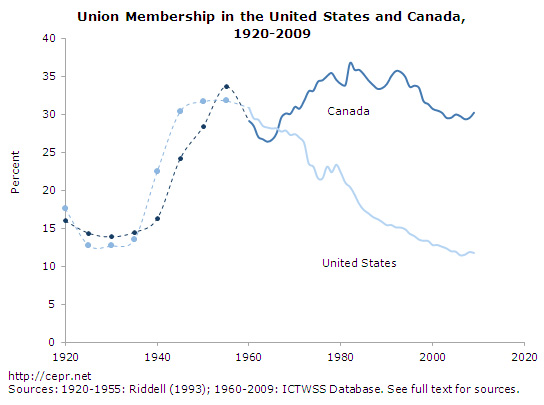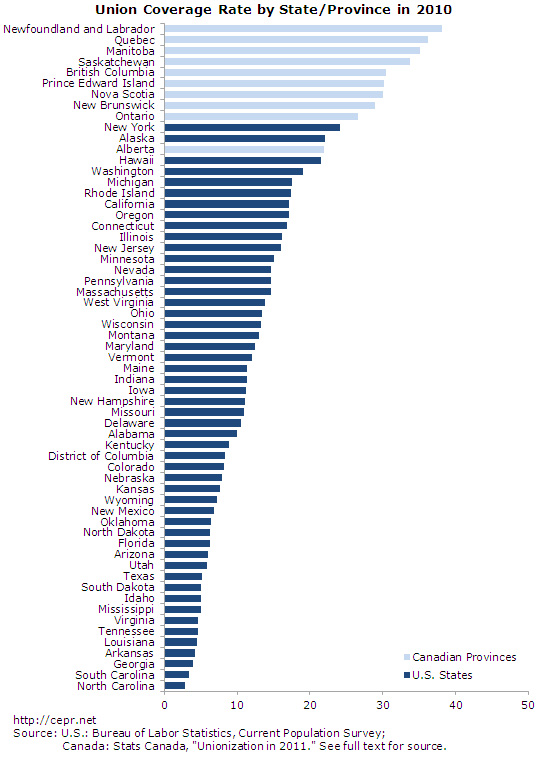September 04, 2012
My CEPR colleague, Kris Warner, has a new paper on what we can learn about labor law here in the United States from the experience of our neighbors in Canada. The whole paper is worth a read, but I particularly like two of the graphs. The first shows that Canada and the United States were on a very similar unionization path from about 1920 through the 1960s. At that point, unionization rates in the two countries diverged sharply.
Kris emphasizes two important differences between the Canada and the United States. The first is that, in the private sector, it is generally much easier for workers to form a union in Canada, primarily because most workers there can form a legally recognized union based on collecting verified signatures. In the United States, of course, even after workers sign cards asking for recognition, they then face a second hurdle in the form of a National Labor Relations Board election (unless the employer decides to recognize the union based on the collected cards). As John Logan and others have documented (pdf), an entire “union avoidance” industry of consultants and lawyers has arisen in the United States over the last several decades to intimidate workers during the NLRB election process, and this industry has generally been highly effective.
The second key structural difference between Canada and the United States, says Kris, is that Canadian workers can rely on first-contract arbitration to ensure that they will secure a contract after legal recognition. In the United States, even after workers win an election, they only reach a contract in a bit over half cases (see John-Paul Ferguson excellent paper (pdf)).
This post originally appeared on John Schmitt’s blog, No Apparent Motive.








